Knapping is never quite as easy as it looks, and the material you pick has much to do with it. While some materials will knap well right from the start, others can be almost impossible for a new knapper to pick up and make anything other than smaller rocks. Learning the difference is essential, especially if you want to stick with the hobby.
So, let’s look at some of the easiest materials to knap and discuss the pros and cons, as well as discuss a couple of materials that are theoretically possible to knap but will only irritate those new to the art of lithic reduction.
Easiest Materials to Knap
1. Obsidian-Nice And Smooth… Mostly
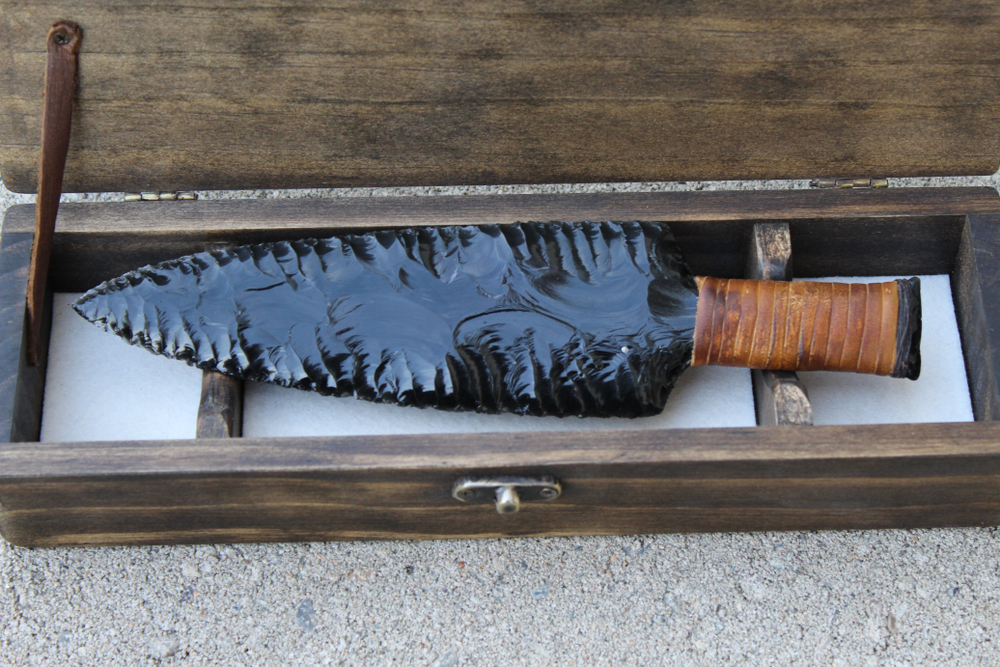
Obsidian has long been an accompaniment for humans. Obsidian is formed when silica-rich magma cools rapidly, generally upon contact with water or in other extreme conditions. Obsidian itself consists of mostly pure silica, colored with iron in various forms.
In addition to being good-looking stuff, obsidian is also very easy to knap. It’s a brittle material without any internal structure to mess with the transfer of the wave of force that generates conchoidal fractures. In some cases, it can be too brittle, especially for those used to working with tougher rocks, but it’s a great material to start with. Obsidian forms incredibly sharp edges, and a good obsidian blade can make things like butchering meat incredibly easy.
The key to this lies in the structure of obsidian. Crystalline structures form over time, but obsidian cools rapidly enough that there’s no crystallization in the material. Indeed, obsidian isn’t even considered a mineral due to this lack of orderly structure, instead, it’s regarded as a mineraloid. The amorphous nature of the material means that force transfers cleanly through it, producing ideal conchoidal fractures.
Not all varieties of obsidian are suitable for knapping. Some, like snowflake obsidian, contain inclusions that will stop a flake dead in its track. In other cases, obsidian may be too weathered to properly flake without encountering internal fractures or voids that have the same effect. But for the most part, obsidian is an ideal material for knappers who are just starting out.
2. Glass-It’s Everywhere!
Glass works well for the same reason that obsidian does, and has a similar makeup. Indeed, most varieties of glass are more pure than obsidian, which makes it an ideal material for beginners to work with. It has a similar profile to the black stuff when it comes to edge retention and sharpness as well so it’s a practical option for making points and other smaller tools.
Glass is easy to source in a wide variety of colors. There are a few types that don’t knap, such as tempered glass and the laminated safety glass used for car windows, but beer bottles, art glass, and even slag glass all work fine. Fiber optic glass is often favored by knappers for the brilliant colors it produces as well.
Beer bottles are perhaps the most accessible way to start knapping. You can cleanly knock out the bottoms of a bottle by putting a bolt in it, head down, and covering the top with your thumb. Then just shake it a few times and it will separate the bottom with minimal parts of the sides still attached.
Knappers often favor TV glass from old CRTs due to its thickness. Just make sure to wear respiratory protection if you choose to use it. It contains lead in addition to the silica dust released by most knappable rock, which you really don’t want in your lungs.
3. Ohio Flint-Colorful, Plentiful, and Easy to Flake
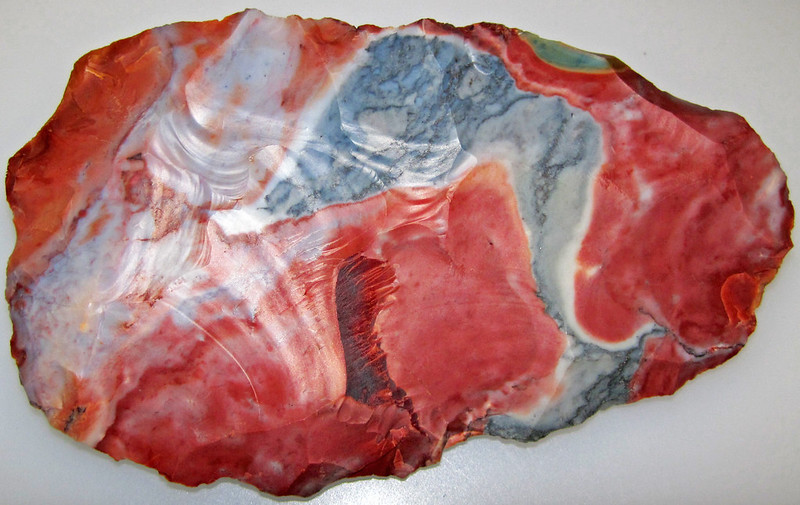
Ohio Flint is a great material that can be found easily online. The formation itself is readily accessible and many people quarry it for personal use or sale. Much of the material can be rather expensive, due to its exquisite coloration, but the duller-colored material is fairly cheap.
Like all forms of flint, it’s actually a chert. This means it’s a micro-to-cryptocrystalline form of quartz intermixed with moganite. Ohio Flint has been found in artifacts all across the United States, it was a valuable trade material. It’s a particularly good material for beginners who want to make larger blades since it’s a bit tougher than obsidian but still tends to flake easily.
What makes Ohio Flint such a standout material is that it has a particularly fine grain, placing it closer to materials like chalcedony or the various knappable jaspers. This gives it a clean flake which comes off relatively easily, which can be a problem for materials that have a lot of toughness in addition to being hard. It’s also harder than obsidian or glass, which means it will hold an edge for longer.
It’s actually Ohio’s state gemstone. The majority of the material currently pulled from the state comes from the area around Flint Ridge, which tends to produce some of the more exotic colors, but there’s flint with knappable quality spread across the entire state.
4. Novaculite-The World Famous Arkansas Stone
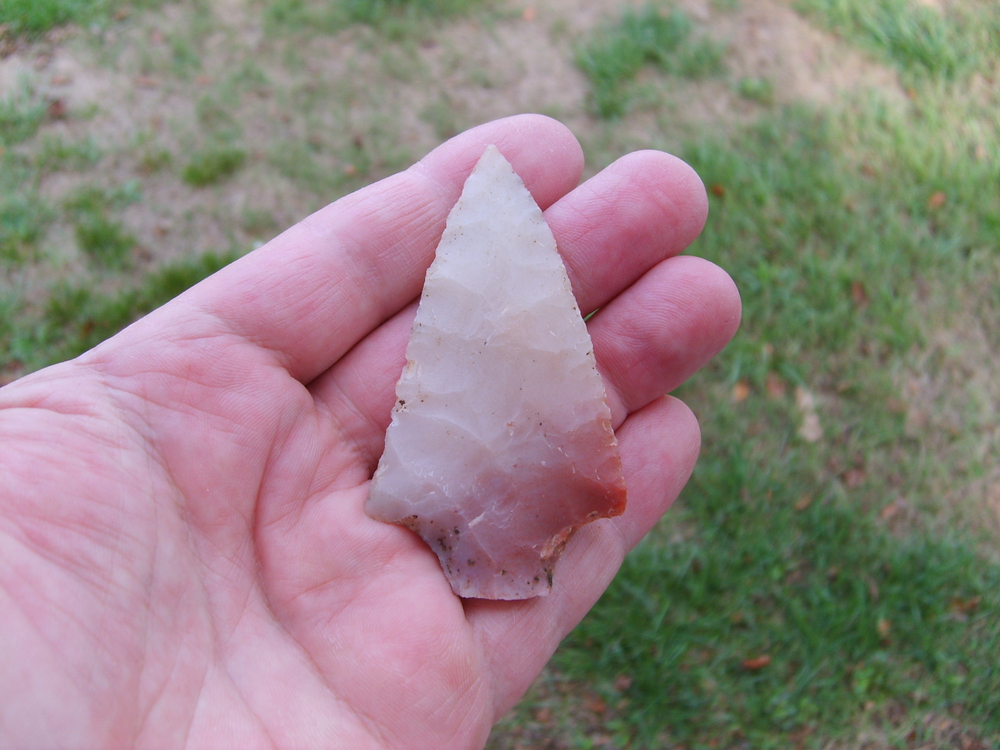
Novaculite is a specific variety of chert found in Arkansas. In this case, it’s a fairly plain grey material that has gained quite a bit of fame. It wasn’t for knapping qualities, however, instead, novaculite is used to make some of the best sharpening stones on the planet. This is due to the hardness of the material, combined with a fine grain that leaves a great edge.
In the past, however, it was used as a trade material and it makes for fine points and blades. Novaculite is generally a fine material even without heat treatment, but when heat has been applied properly it works even better. In fact, numerous studies on heat treatment have been carried out specifically with this material.
Novaculite is generally sold in rectangular slabs, meant for sharpening steel knives. There’s nothing preventing you from using these to perform flake-over-grind knapping, however. Finding it in rougher forms will generally take more looking, but it can be done as well.
The main advantage here is the tight grain, much like Ohio Flint. It generally responds well to heat treatment, which can make it a good material for beginners who want to give that a shot as well. The best part is that you can find a ready-made protocol for doing it, straight from Arkansas where the material comes from. The studies done show that the material differs substantially after a good kiln treatment.
5. Jasper-A Fine Material, With Exceptions
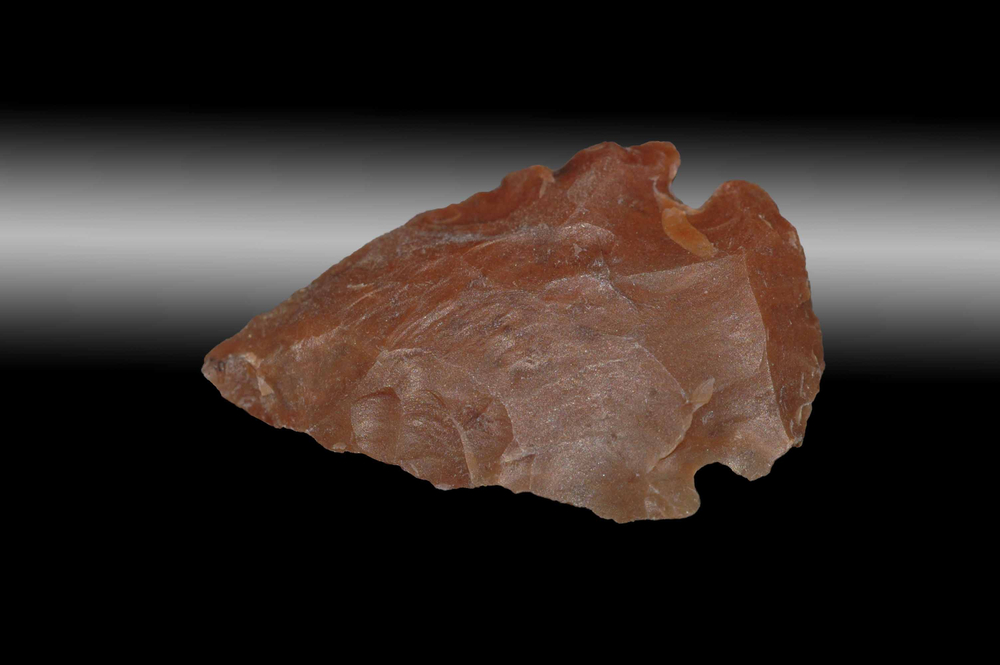
It’s no secret that I love jasper, and it also makes for a great material when it comes to knapping. That said, you have to be selective about which nodules you use and you may need to be able to use basic heat treatment techniques in order to have a lot of success with the material. Unlike the others on this list, it’s a bit less specific and varies a lot more than specific regional varieties of different stones.
Jasper is another chert material, often from a diagenetic source instead of a biogenic one like the majority of flint and chert varieties. Classically jasper refers to orange and red chert with a fine grain, but these days the actual coloration is a lot less important compared to the gem qualities of the material.
And the good news is that jasper can often be found with all of the bad material banged off the outside. If it occurs in your area, and it occurs in huge portions of the United States, you can generally find rounded nodules in stream beds without too much difficulty.
You’ll have to test individual nodules of the material and make a call to decide whether they need heat treatment or not. Keep in mind that jasper will often require a higher peak temperature, of 450°F-500°F than most other chert materials, but it’s a strong material that makes beautiful points, blades, and eccentrics so it’s remained a favorite for a long time.
Materials for New Flintknappers to Avoid
There are a few common materials out there that really aren’t worth bothering with for new knappers. Two of these actually look spectacular when they’re worked correctly but have a ton of issues that will likely irritate new knappers. The other is common, and knappable, but is an incredibly hard material to work.
1. Basalt-Works in a Pinch, Not Preferred
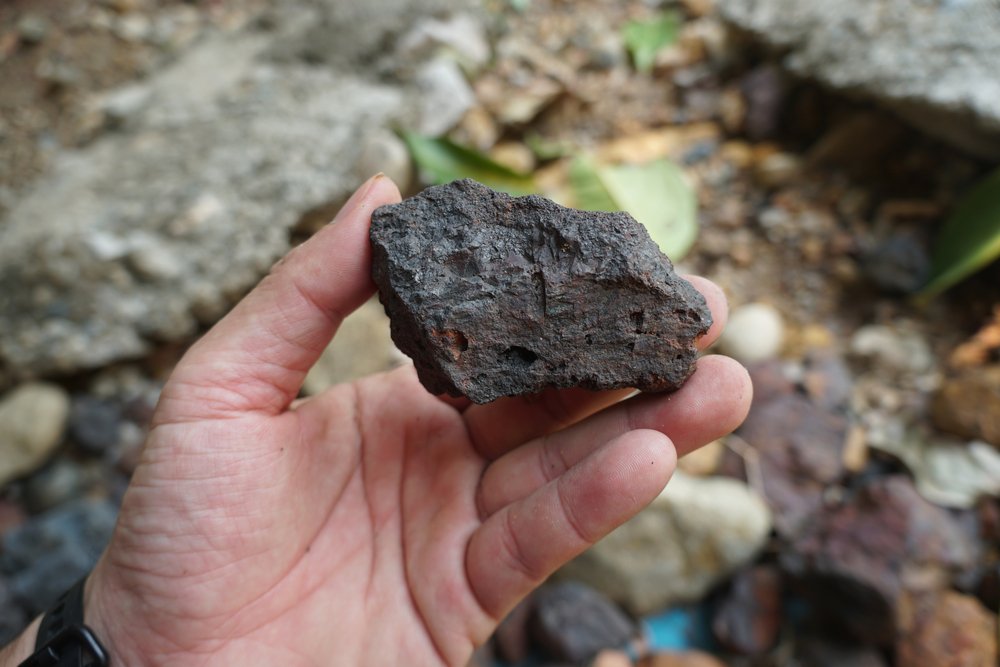
Basalt is a relatively high silica (45-45%) igneous stone that’s found in many places. It is, in theory, a knappable material but it’s not really something for beginning knappers to work with. In my opinion, it teaches bad habits if it’s your first material, and frankly there’s not a lot of reason to work with it unless it’s all you have around.
The main problem is that basalt has a tendency to require excessive force in order to make it flake. This is compounded by the fact that some of it will step-fracture (forming a 90° flake exit instead of a smooth one) from the beginning. A lot of it will step fracture once the material is thin.
If you do choose to use it, stick with larger pieces like hand axes and adzes. For a beginner, trying to make thin points and blades of the material is just an exercise in frustration.
2. Agate-Expensive, Rare, and Requires Heat Treatment
Agate is a different animal entirely from most of the other forms of microcrystalline quartz that are commonly knapped. The biggest problem with it is simple: it’s incredibly hard to percuss and needs to be heat treated. On top of that, pound for pound it’s going to cost you more than any other material you might take a try at knapping.
Now, agate can be used to make incredible points but you should approach it when you have experience with both knapping and heat-treating material. One of the realities of heat treatment is that you may not know exactly how it’s going to change the appearance of your stone, so it’s also a good idea to see if anyone else has treated something similar.
All said and done, agate works well enough when it’s been treated. That aside, it takes an experienced knapper who doesn’t mind heat treatment and risking the rather high cost of the material itself for it to be a good choice. It’s just not the best material for those new to the world of lithic reduction.
3. Macro-Quartz Varieties-Irregular Fractures and Hard to Work
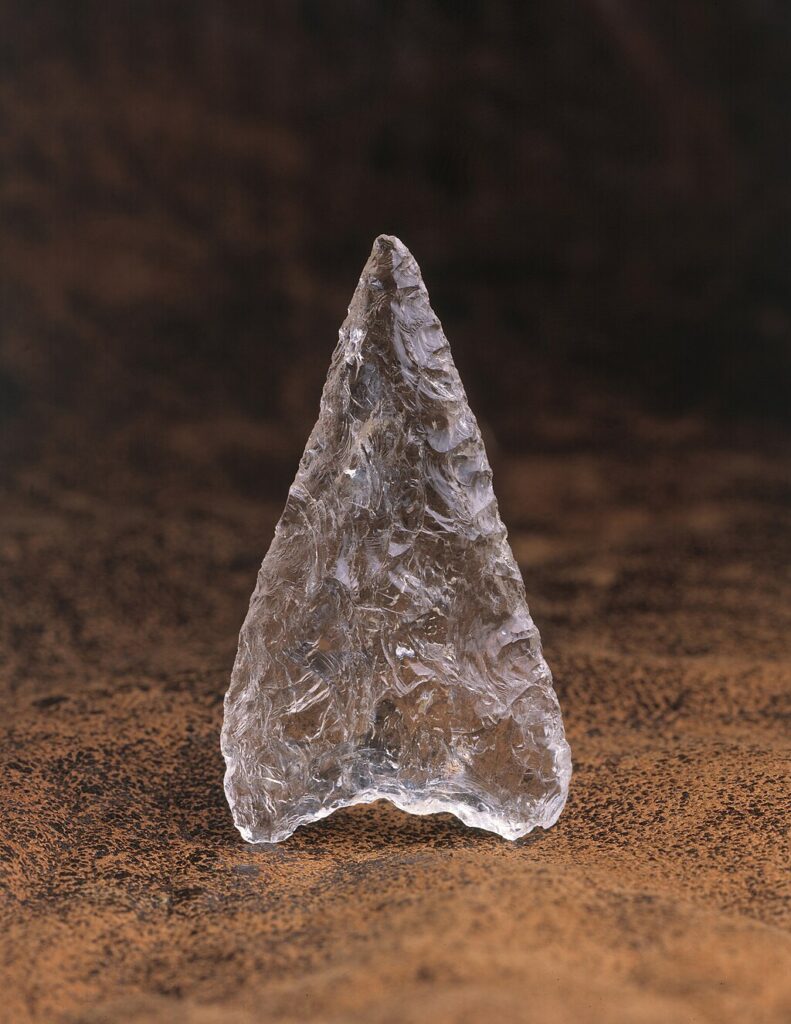
You may have seen some of the rather spectacular artifacts made of water-clear rock crystal. And quartz, in its macrocrystalline form, is certainly a knappable material. That said, it’s hard to find pieces large enough to work with since they’ll have to be in the form of a single crystal. This includes all of the gemstones in that family, including things like amethyst and citrine.
It’s somewhat debated whether or not quartz has a true plane of cleavage, but it’s generally thought to be in line with the sides of the prism. It’s been done with primitive methods, but there’s a reason you’ll see very few modern knappers take a crack at it more than once or twice.
If you’re really dedicated to giving it a shot, you need to take a special approach. I recommend finding a single crystal point, well-formed and with few inclusions, and then slicing it with a trim or slab saw. From there you can proceed with flake-over-grind techniques carefully, but just bashing a large point into a biface is going to be nearly impossible.

